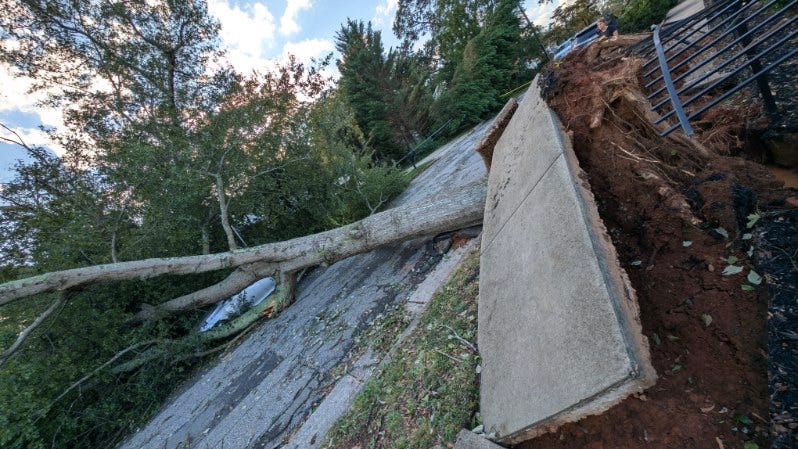
If you read my autobiographical reminiscences, you may have realized that I have family in Upstate South Carolina and western North Carolina, which have been hit hard by the unexpected ferocity of Hurricane Helene. Power has been out in Greenville, SC, for days and roads are nearly impassable because of downed trees on nearly every block.
My brother Sam, who went out in a truck on Friday to buy gasoline for his generator, said only about half the stations that had working pumps and were running out of gas quickly. “Lines of cars around the block,,,, reminiscent of the 1970s,” he texted. He went out again today and found a stark difference between local QuikTrip stations and others. At QT, the lines were longer but flowed faster because stations had closed all but a single entrance and exit. Elsewhere, stations were chaotic traffic jams. At one point, he found himself unable to exit after fueling up because the cars behind and in front of him left no to maneuver room. (He persuaded the one behind him to ease away from his bumper.)
The assisted living place where my mother lives has a generator and at first continued to operate its kitchen and elevators. By today, however, the generator had become unreliable, the lights were flickering, few employees could get to work, and the kitchen was offering dry Cheerios for breakfast. Sam brought our mom to his house, which has no power. He later realized that he needed to return to get her medicine, which usually is delivered daily. I can only imagine how residents who don’t have local family—or who are in the memory care wing!—are managing.

Even people who were prepared with generators, many bought after a blizzard 20 years ago, needed gasoline to power them and, they soon realized, adapters to connect them to household appliances. The adapter aisle at Home Depot was quickly depleted.
The good news is that food is available. Grocery stores are operating more or less as normal, assuming you can get to them. When you sell frozen food, you apparently install large, reliable generators.
Meanwhile, my cousin in Asheville finally got weak cell signal back today. We’d been unable to communicate with her before now. With her husband, pets, and 95-year-old mother, she’s evacuating to Winston-Salem through the weekend, hoping Duke Power will live up to promises that power will be restored by Friday but preparing in case it takes a few days longer.
Although terrible in some areas, the flooding isn’t as bad as it might be, thanks to the region’s many man-made lakes. They absorbed water that otherwise would have flowed into populated towns.
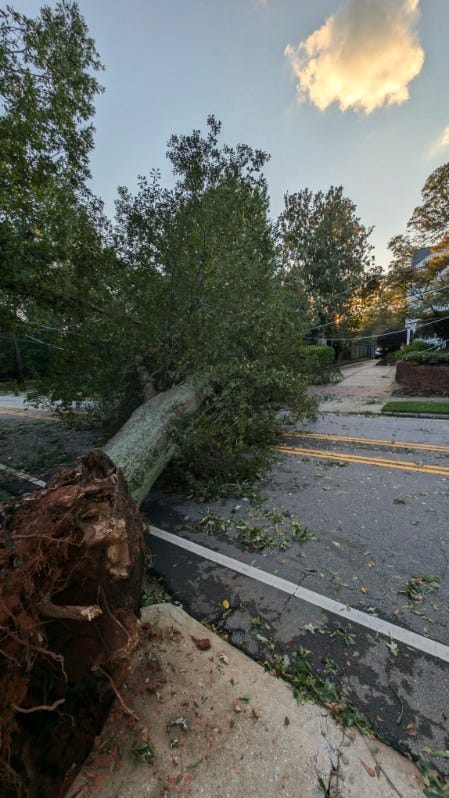
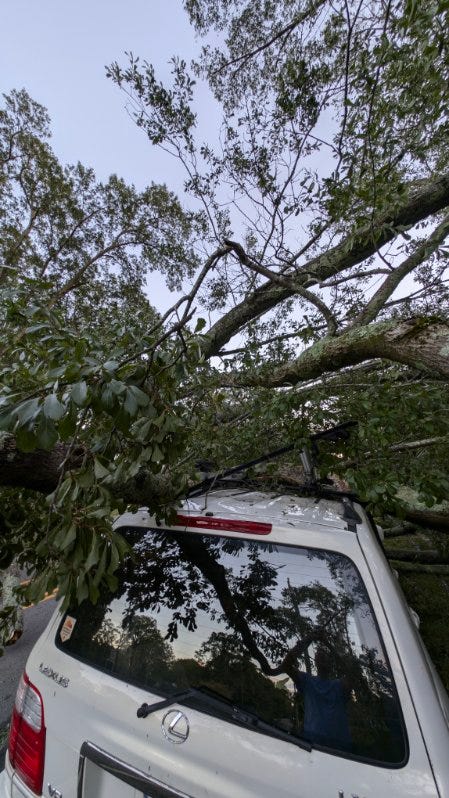
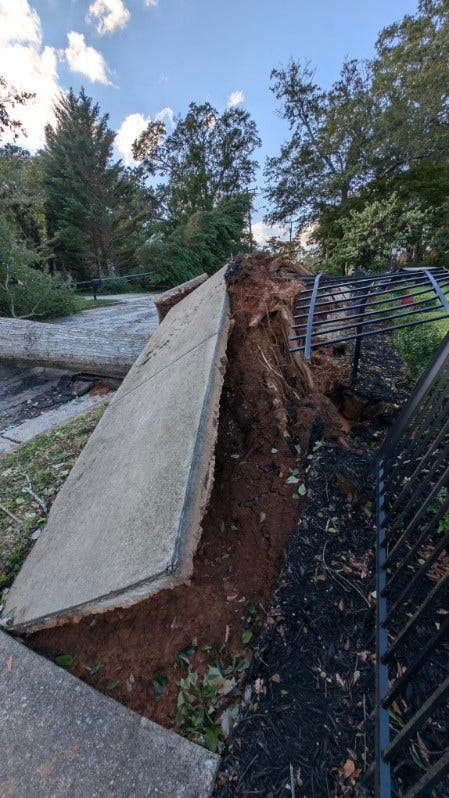
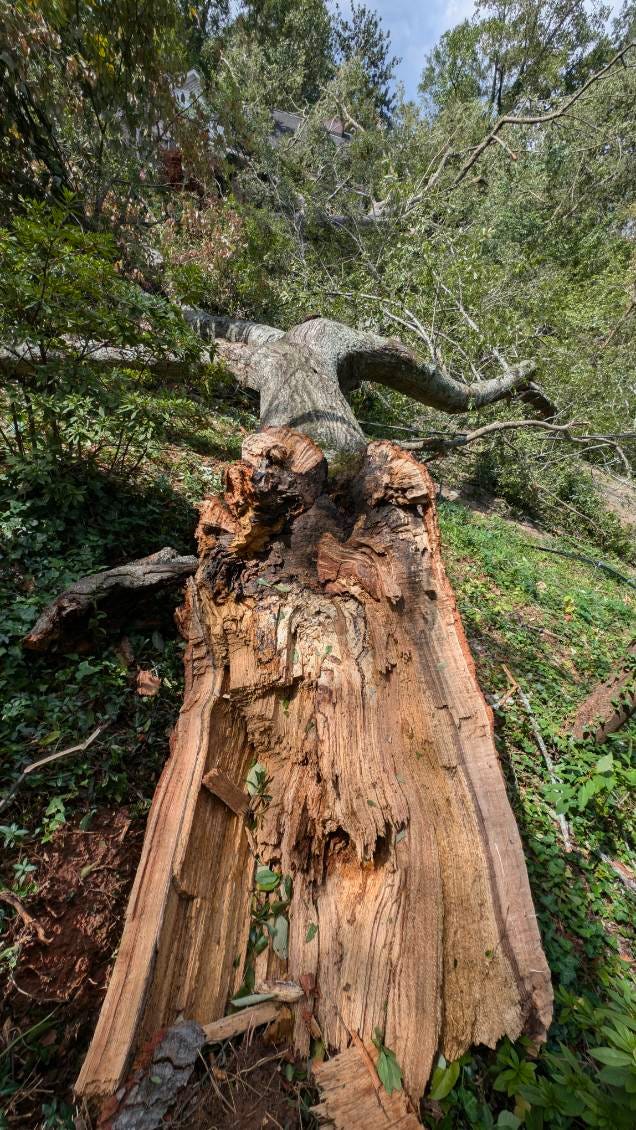
For most places, downed trees are the biggest problem. People like trees and want to live near them. They don’t want limbs cut—much less trees removed—to protect power lines. When a big storm comes, they’re in trouble. (Similar tree-loving attitudes have made California more fire-prone, as explained in this column I wrote in 2019.)
My father, who loved trees and knew all about the region’s native species, used to say that the American chestnut, largely absent since blight hit it in the early 20th century, was the area’s old growth tree. The others lived only for 45 years or so. Once they hit the mid-century mark, they were on borrowed time. A family that planted a beautiful grove of pecan trees 67 years ago, my brother John reports, saw every single one fall to Helene. “That’s a 45 year tree,” he says, quoting my dad. “Of course it fell down.” (John, who lives outside Charleston, is usually the hurricane-prone sibling.) If a tree falls in your yard, you’re responsible for removing it. Chain saws will be running for weeks, even months, as people clean up. There will be plenty of firewood this winter.
It’s going to take a while for the area to get back to normal. The damage is so extensive that simply procuring enough new electrical transformers could pose a challenge—not to mention finding the manpower, which will largely come from out of state. Usually a serious hurricane hits either the Carolinas or Florida, and repair crews from the less-affected region migrate to the disaster area, either because of mutual-aid agreements or the lure of profitable work. But this time both are affected.
John reports that a friend’s father drove from Asheville up to Black Mountain to find a working cell tower so he could let family members know he was OK. There are good reasons most of us have abandoned landlines, but they did generally hold up better during natural disasters. How to increase resilience for phone and internet service should be a major story coming out of this disaster.
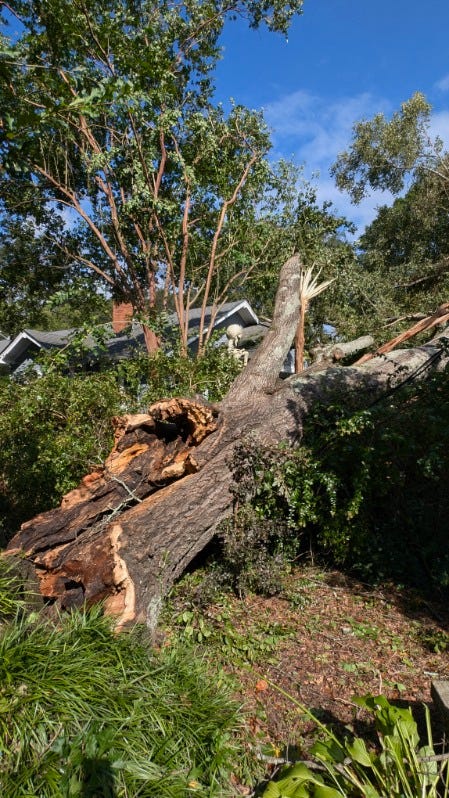
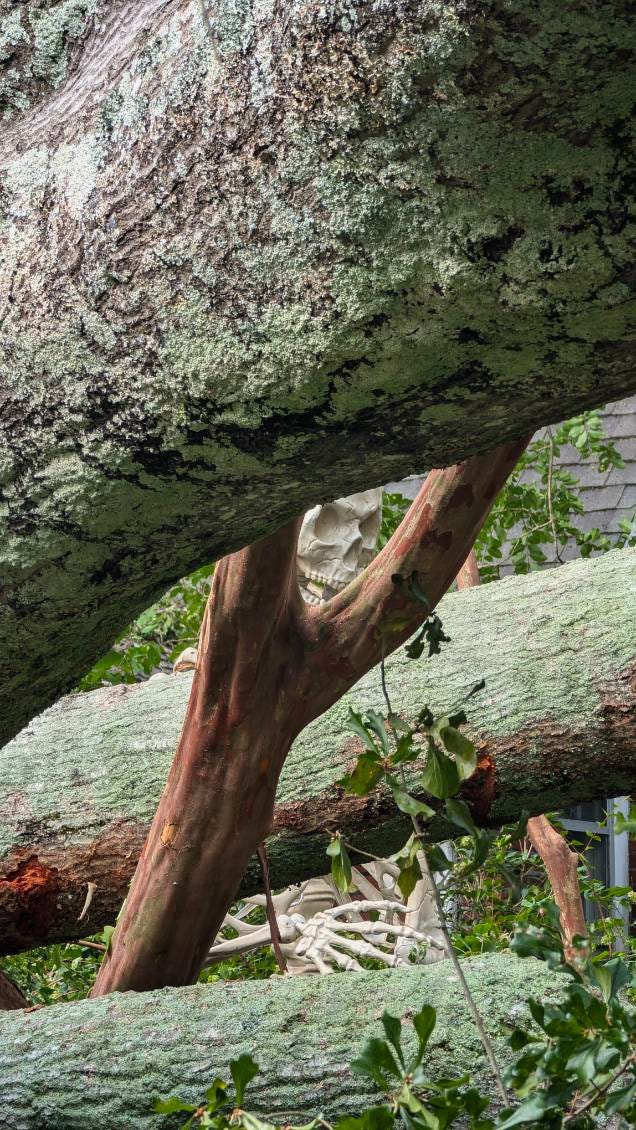
Not everything went down, however. Sam passed a house where fallen trees covered the front yard but spared a 12'-foot skeleton up for Halloween.
This morning, the permanently aggrieved classes of Twitter/X were complaining that the disaster isn’t getting adequate presidential attention or enough media coverage, compared to such minor stories as the presidential race and Israel’s successful decapitation of Hezbollah.
That doesn’t seem to be the case now, at least as far as the media are concerned. But the complaint does give me an opportunity to post this classic story by the great Glenn Garvin on Hurricane Andrew. Highly recommended!
Important Reminders:
I now have a podcast, which you can access by subscribing to this Substack, subscribing on Apple or Spotify, or using the RSS feed. There’s also a podcast playlist on my YouTube channel.
I’m trying to get to 10K YouTube subscribers, so please subscribe to my channel, YouTube.com/@vpostrel. Here’s my latest non-podcast video. Be sure to watch until the end. There’s a visual punch line!




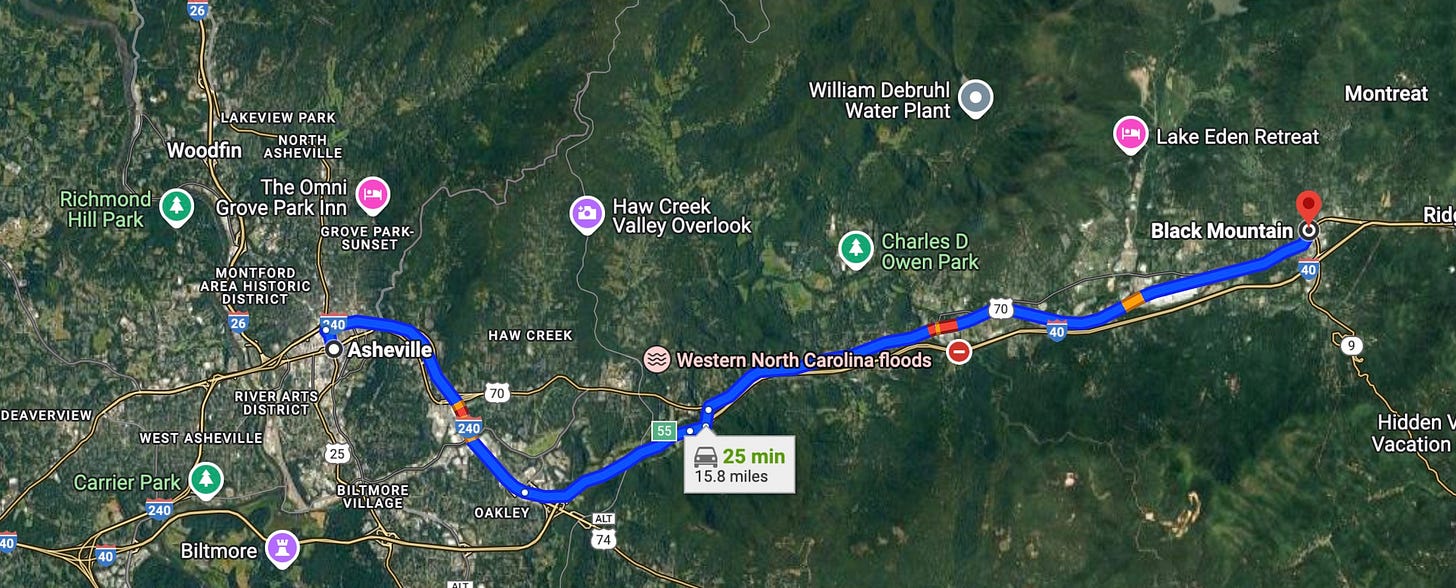
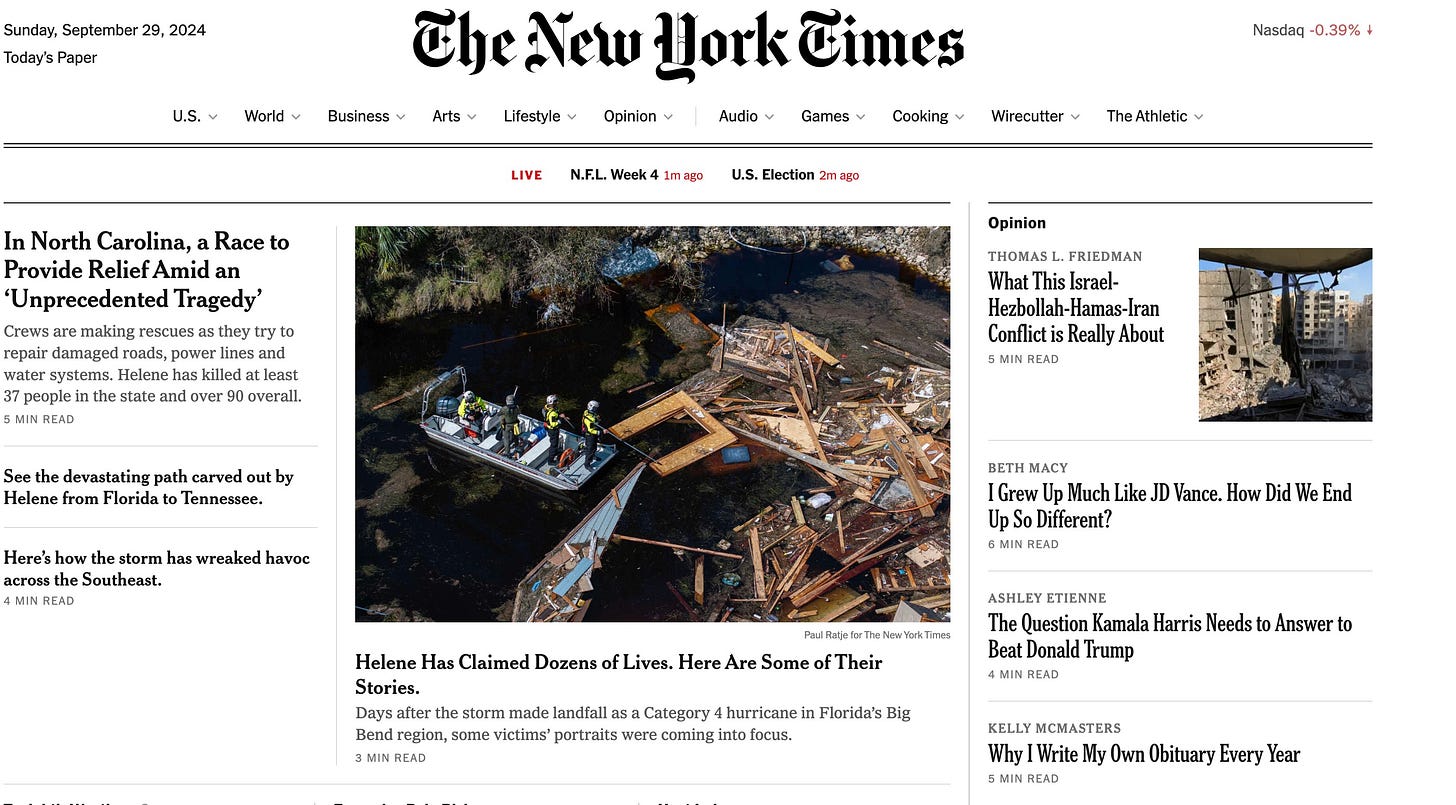
Even the police/fire/medic radios were impacted in some areas for a period - basic "HAM" radio operators have been operating almost non-stop. Have a basic handy-talky / walky-talky programed for local and regional repeaters and simplex frequencies as a backup (local hams can help you program and explain simple licencing options - but in true emergency you do not need a license to transmit). Blister pack FRS radios have only super local range, but have your neighbors coordinate using them and have at least one or two people with a more capable radio. Also have a basic battery/crank AM/FM radio - which usually have a flashlight built in. Super basic, but super comforting when cut off from cell and internet.
The ham repeater on Mount Mitchell has been non-stop since the event began - at 6,000ft most can hear it, and many can transmit to it. They have been passing info while first responders have been busy with search and rescue.
Starlink (and others) are working on satellite to cell phone communications. As this rolls out over the next few years, communications in natural disasters should be more robust. https://starlinkinsider.com/starlink-direct-to-cell/